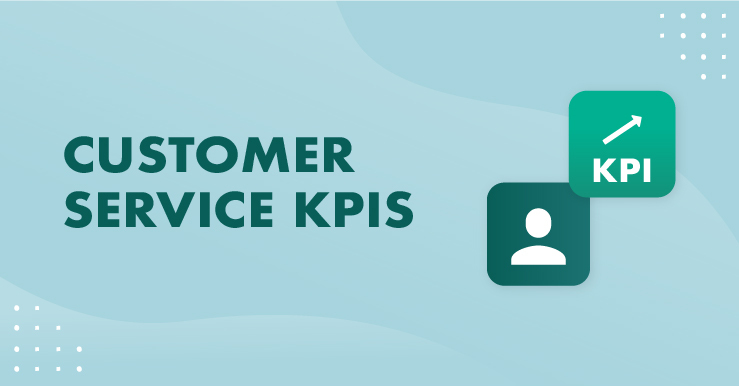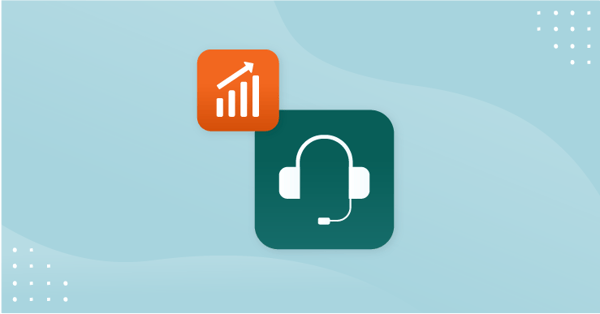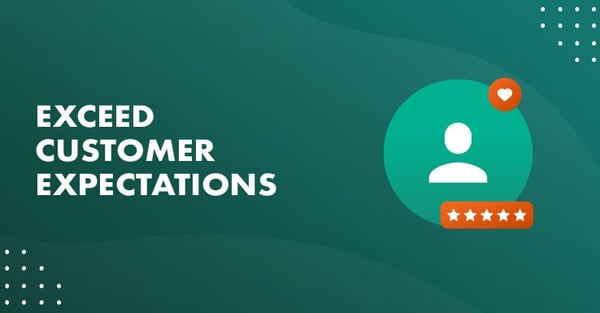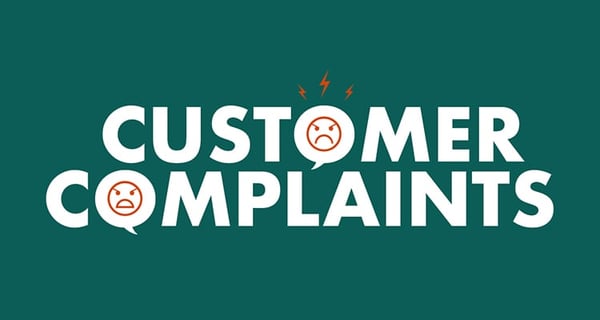Imagine that you’re the Customer Service Director of a rapidly growing B2B company.
Your company prides itself on speedy service, and works hard to smash resolution times and meet Service Level Agreements (SLAs) like clockwork.
But then you start noticing something alarming: customer churn is increasing, and customer complaints are creeping up.
What's going wrong? 🤔
This scenario is more common than you might think.
You might be surprised to hear that traditional ways of measuring customer service performance, like SLAs, may not provide the full picture anymore.
They tell you about the speed and efficiency of your service but can often overlook one crucial aspect - the quality of customer interactions.
In our recent report – “European B2B Customer Service 2023” – we sought to unravel this complex issue.
By surveying SuperOffice and CustomerTrends customers across six European countries, we wanted to better understand the state of B2B customer service in Europe today.
The findings were enlightening and signal a crucial shift in the way we need to approach customer service measurement.
What are the typical customer service KPIs?
In the customer service domain, most companies use standard metrics to gauge operational efficiency.
You might recognize terms such as response time, resolution time and time in queue, just to name a few.
These metrics provide a quantifiable measure of how quickly and effectively a customer service team operates. Another often-cited metric in this mix is the Service Level Agreement or SLA.
Contrary to popular belief, SLAs aren't a single metric, but a collection of agreed-upon metrics between a service provider and a customer. These metrics could encompass anything from response times to uptime percentages, based on the nature of the business and the agreed-upon standards of service.
Why are we talking about SLAs in a conversation about KPIs? 🤷
Well, according to the report’s findings, 82% of B2B customer service teams are focused on increasing customer satisfaction.
But here's where it gets a bit confusing.
Despite all this talk about customer satisfaction, only 33% of companies are actually using the CSAT (Customer Satisfaction Score) as their most important KPI.
Instead, SLAs are the number one KPI for 39% of companies.
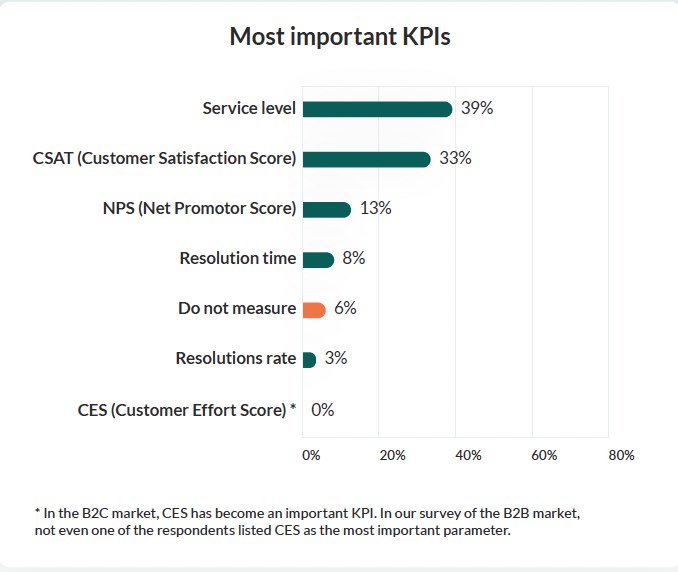
Sure, SLAs are important. But do they reflect customer satisfaction?
The problem with typical customer service KPIs
Have you ever had to rush to answer a customer's call just to keep your response time low, only to find that the hurried conversation didn't solve their problem?
Or, let’s consider the number of resolved tickets.
Your team may resolve a high number of tickets each day, but if your customers aren’t satisfied with the answer or if they have to keep contacting you for the same recurring issue, then this high resolution rate is meaningless.
That’s a limitation of the typical customer service KPIs.
Traditional KPIs, such as response time, number of tickets resolved, or time spent on a call, have been guiding customer service for decades.
While these metrics have their place in assessing efficiency, they don't necessarily equate to customer happiness.
A survey by Bain & Company found that while 80% of companies believe they deliver superior customer service, only 8% of customers agree.
This discrepancy, often referred to as the "delivery gap”, can occur when companies focus too much on operational efficiency metrics and lose sight of the customer's perspective.
Customer service expert, Shep Hyken, found that quality of the customer service experience matters more than a fast response.
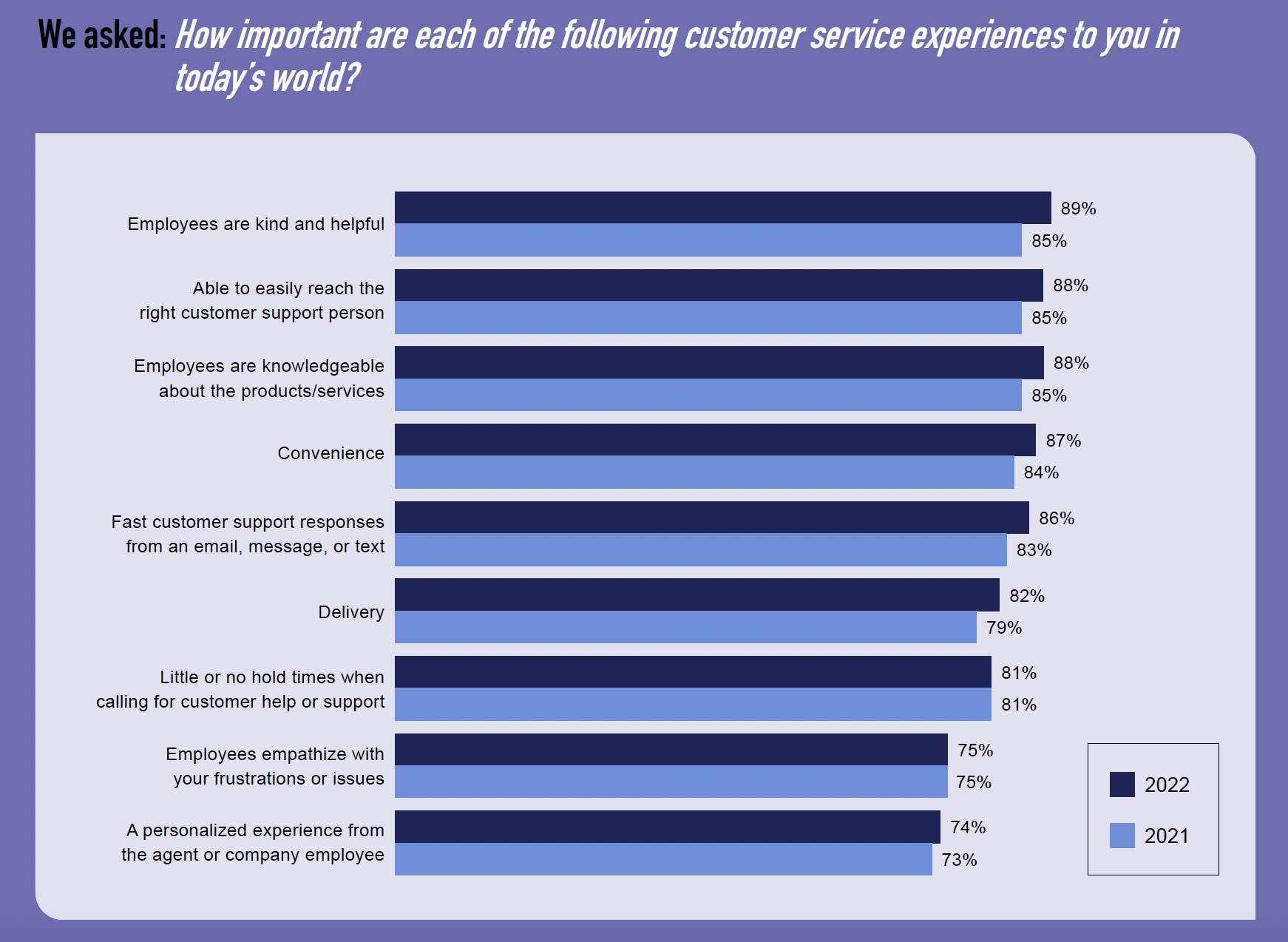
So, while traditional KPIs can provide useful snapshots of operational efficiency, they are not enough to paint the full picture of the customer experience.
To really understand how a customer feels, we need to look deeper and embrace metrics that put the customer's perspective at the forefront.
Why we need more customer-centric KPIs
In today's ultra-competitive market, the companies that stand out are those that place their customers at the heart of their business.
They understand that it's not enough to merely deliver a product or service; they have to create exceptional experiences that resonate with their customers.
And to do this, they leverage customer-centric KPIs.
Let's look at three below:
1. Customer Satisfaction Score (CSAT): CSAT gives you direct feedback on how satisfied your customers are with your products, services, or a particular interaction.
It's simple, flexible, and allows you to pinpoint specific areas for improvement.
It's worth remembering though that CSAT only measures satisfaction at a single point in time and doesn't necessarily indicate long-term loyalty.
2. Customer Effort Score (CES): CES measures how much effort a customer had to exert to get their issue resolved. In many cases, customers value effortless experiences more than "delightful" ones. A low CES can indicate a smooth, frictionless customer experience, which can promote loyalty.
3. Net Promoter Score (NPS): NPS goes beyond measuring just satisfaction. It identifies how likely a customer is to recommend our company to others. As such, it's a powerful indicator of customer loyalty and can even predict business growth.
Customer-centric KPIs, while powerful, are just the tip of the iceberg.
These measurements give important clues about how happy customers are, how much effort they have to put in, and how loyal they are.
But they don't tell the whole story of a customer's journey with your company. And they don't reflect how these interactions shape their overall experience.
So, what’s the next step?
Stepping up to advanced customer service KPIs
To understand your customers and meet their needs, you need to step up to more advanced KPIs. These can help you track more subtle aspects of the customer experience that often get missed.
For instance, Zappos, an online retailer famed for its extraordinary customer service created an innovative metric named the 'Personal Emotional Connection' (PEC). It measures the emotional rapport between their customer service rep and the customer during their interactions.
Customer service reps are encouraged to establish PECs with customers, going beyond the transactional nature of their conversations to build real, human connections. 🤗
This kind of focus on the emotional, human side of customer interactions is what sets apart businesses that are merely functional from those that are exceptional.
It's about understanding that customers aren't just data points, but people with feelings and unique needs.
So, what kind of advanced KPIs can you use to measure these deeper, more emotional aspects of the customer journey?
Here are a few examples:
Predictive Analysis: The goal of predictive analytics in customer service is to anticipate customer needs and problems before they arise.
Using historical data, predictive models, and machine learning, businesses can predict customer behavior, needs, or risks at an individual level. This can help with everything from preemptively addressing service issues to more accurately forecasting future contact volumes.
Sentiment Analysis: With the emergence of AI technology, businesses can now measure the emotional tone behind customer communications.
Sentiment analysis provides insight into how customers feel about your products, services, or brand in general.
Customer Journey Analysis: Customer journey analytics provides insights into customer behavior across multiple touchpoints and over time. This is significant because it's the whole flow of the experience that can lead to satisfaction or dissatisfaction – not just one touchpoint.
These kinds of advanced KPIs can give you a deeper understanding of your customers' journey and help you stand out from your competitors.
Conclusion
When it comes to measuring customer service performance, one size doesn't fit all.
The key is to create a balanced view that combines basic, next-level, and advanced KPIs. This gives you a complete picture of the customer experience.
SuperOffice CRM is especially critical for companies that are still primarily relying on SLAs as their key performance indicators. It provides the tools and support needed to make sure these basic processes are running effectively.
After all, you have to get the foundation right first.
As you get more comfortable with these KPIs, you can start incorporating more advanced ones.
The final goal is to create a complete view of your customer experience. This journey, just like your customers', is a continuous process of learning, evolving, and growing.
Your customers aren't just numbers – they are the heart of your business. ❤️
Keep listening, learning, and adapting to their needs.
A company that can balance efficiency with keeping customers happy is the one that will win.
